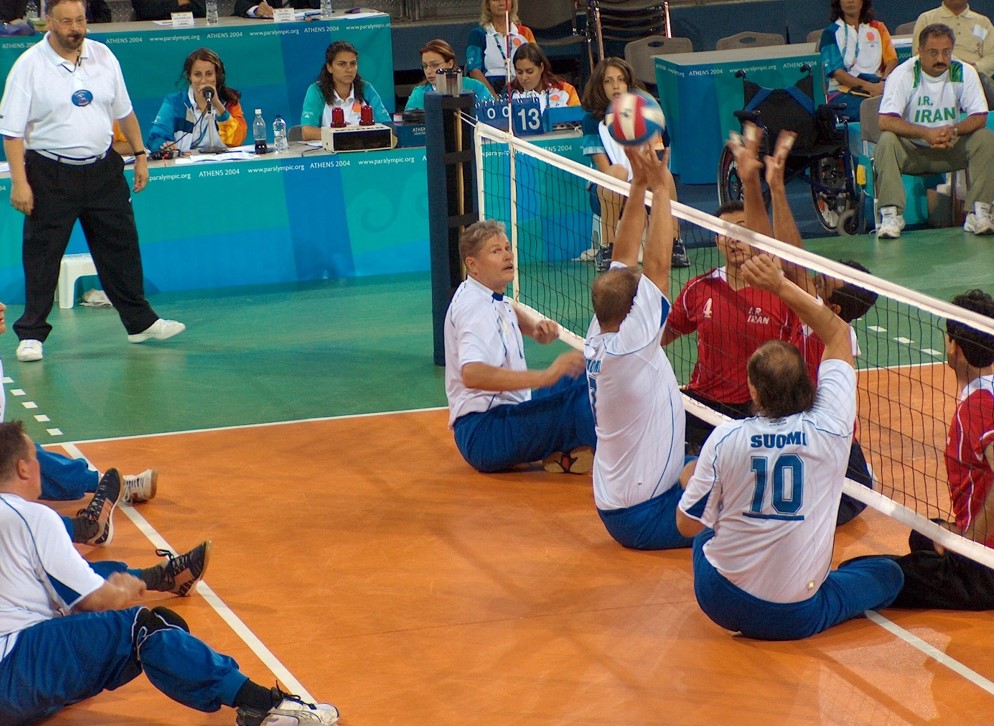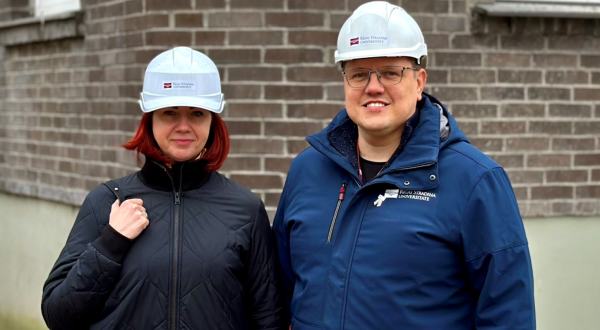Dissertation on Sitting Volleyball Players’ Health and Quality of Life
The international study, titled 'Indicators of Health and Quality of Life of People with Disabilities – Sitting Volleyball Players,' examined the health and quality of life of Paralympic volleyball players. The study was conducted between 1995 and 2009 and included participation from several hundred athletes representing 25 countries.
Participants for the study were selected from various sporting events including the World and Continental Championships and Cups, as well as the Paralympic Games. Sitting volleyball is a sport predominantly played by individuals who have lost one or both legs due to causes such as traffic accidents or military conflicts, as well as those with a range of congenital or acquired orthopaedic and neurological conditions.
 Paralympic Games in Athens 2004. Men's sitting volleyball - Finland vs Iran. Photo from the dissertation by Pāvels Mustafins
Paralympic Games in Athens 2004. Men's sitting volleyball - Finland vs Iran. Photo from the dissertation by Pāvels Mustafins
After undergoing cardiorespiratory endurance testing it was concluded that the sitting volleyball players showed higher endurance than others with similar leg amputations who are not engaged in sports.
During the Paralympic Games, sitting volleyball players were questioned about their quality of life and their responses showed better physical health but poorer mental health compared to others with similar functional impairments who are not engaged in sports. It should be noted that the survey was held during matches, which is a time that the sitting volleyball players experience greater stress. This may have influenced their answers about their mental health.
The study also assessed specific skills that sitting volleyball players possess, e.g. serving, blocking, moving, spiking, ball reception, passing, etc., and their relation to the athlete's medical classification group. No such correlation was found in sitting volleyball players or in functionally healthy people without leg amputations, suggesting that the presence or absence of legs does not affect the outcome of sitting volleyball when sitting on the floor during play.
The players' most frequent musculoskeletal complaints were also compiled, as well as information on sports injuries they have suffered. Sitting volleyball is a sport with a low injury rate and can be compared to classical (Olympic) volleyball. Sitting volleyball players are more likely to suffer various injuries to their hands and fingers because the hands are used to move the body during the game and the shoulder joint becomes weight-bearing. Additionally, the game has different rules compared to classical volleyball - blocking serves is allowed, which increases the chance of injuring the fingers. Frequent complaints of lower back and shoulder pain in sitting volleyball players are related to the consequences of leg amputations and e.g. the use of crutches in daily life, as well as to the biomechanical specificities of the game of sitting volleyball.
Pāvels Mustafins will defend his dissertation ‘Indicators of Health and Quality of Life of People with Disabilities – Sitting Volleyball Players’ on 7 June 2023.
Read more
Related news
 RSU is growing and developing: major reconstruction underway in the main buildingDevelopment, For RSU Employees, For Students
RSU is growing and developing: major reconstruction underway in the main buildingDevelopment, For RSU Employees, For Students


